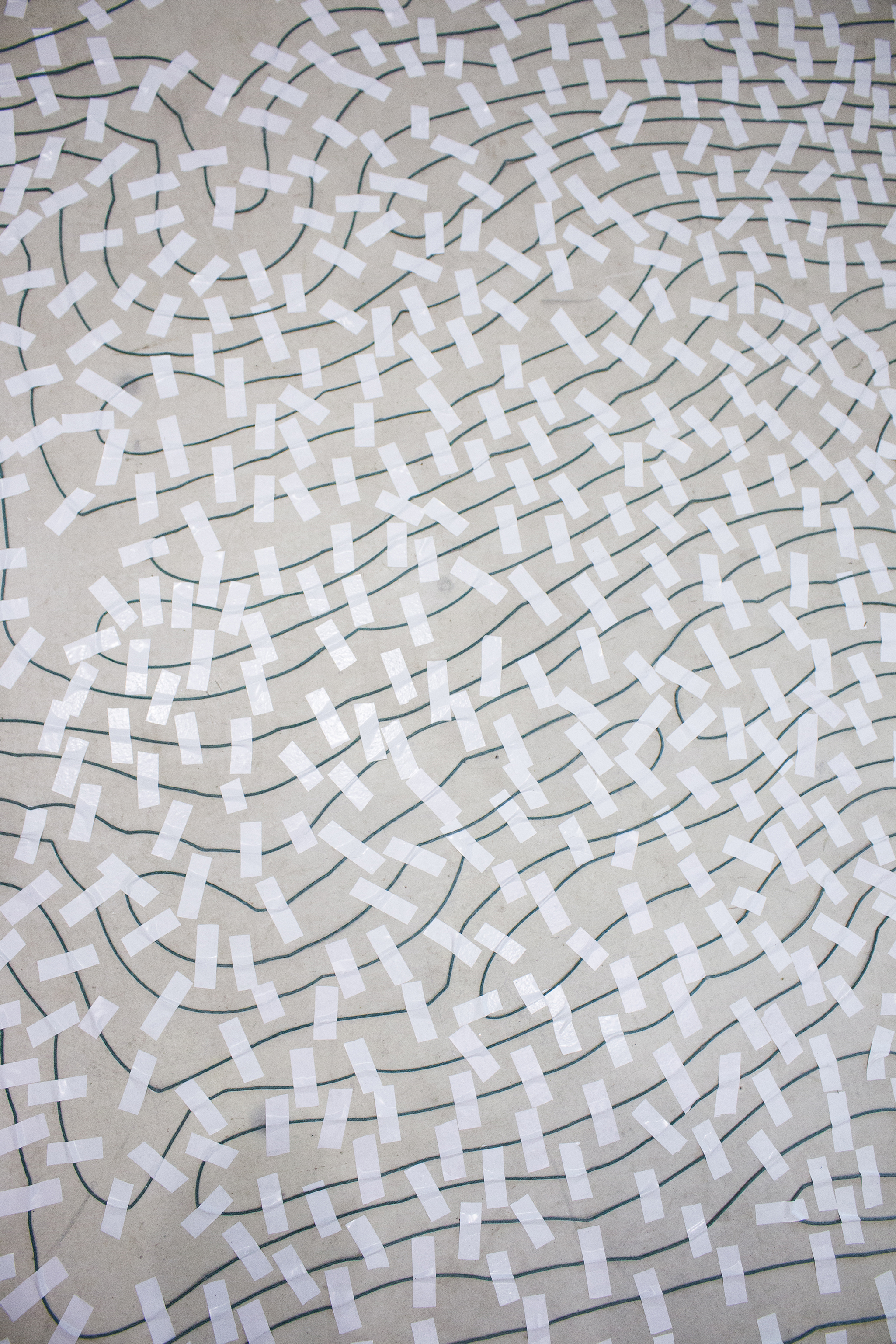8 x 8 MÖBELHUNTE







8 x 8 Möbelhunte
Material: 64 transport dollies, 64 rocket engines, 544 m ignitor cord, 64 cable ties, isolation tape
Measures: 790,0 x 550,0 x 390,0 cm cm
Obfuscation
In order to buy time, find cover or hide, add smoke or ambiguous and confusing information!
It is relatively common for different meanings to share the same word. Paired with the increasing amount of information available online these days, this results in an evergrowing possibility of finding incorrect information due to confusion caused by ambiguous words.
Take, for example, the eighty - six transport dollies appearing in Markus Butkereits works “8 x 8 Möbelhunte”, “Der Stapel”, “Aufhängung für 6” and “Zwei Seile und vier Motoren”. These simple boards with wheels are also called "Hunte" or “Hunde” in German. The term, coming from the miner's language, refers to the open, box-shaped tramways, which were developed at the turn of the late Middle Ages to early modern times in order to increase the efficiency of coal extraction. „Hund“ is German for dog and Wikipedia quotes one source claiming the miners called the wagons „Hunde“ because of the noise they made on the tracks.
When further consulting the interwebs, one finds out that etymologically the English word “hunt” derives from the Old English “huntian” and that one of the meanings of the verb “hunt” is searching, seeking or being on an endeavour to find something. Whereas in the context of engineering, if something “hunts”, it is in a state of instability of movement, it oscillates about a desired speed, position or state.
All “Hunte” first had wooden disc wheels, which ran on wooden tracks, facilitating the transportation of ore tubs to and from the mines. Later, iron-reinforced angle rails were introduced and eventually, the entire railway system developed from the principle of the rail-bound “Hunt”.
With the railway system came people writing on the trains, leaving their monikers or tags to hide their true identity. That was long before the Internet emerged, long before users leaving a trail of their personal data and interests while surfing and long before they started to wonder how to disappear in a fog of data.
In the early days trains were driven by draft animals, later they were powered by steam engines and then by electric and diesel engines.
Speaking of engines, when a model rocket engine is ignited, the propellant burns, ejecting high-pressure gas out of the nozzle and producing thrust in the opposite direction. Once the propellant is completely consumed, the delay charge begins to burn. The delay charge has no driving force, but produces a smoke trail to better follow the rocket.
Figuratively, on the other hand, smoke (or fog) is associated with insignificance and transience. It refers to a condition of error, uncertainty, lostness and the grey area between reality and the state of the vague.